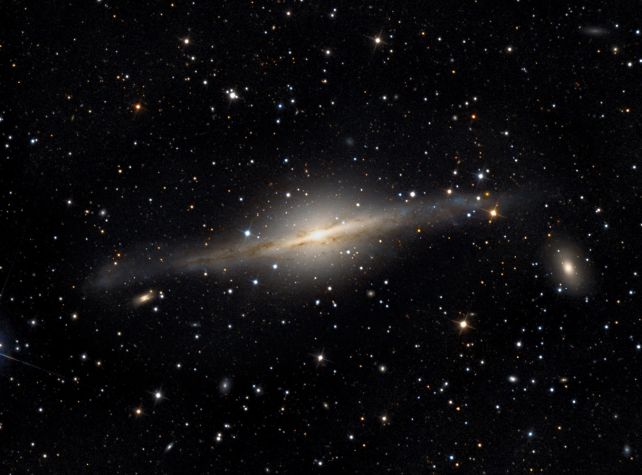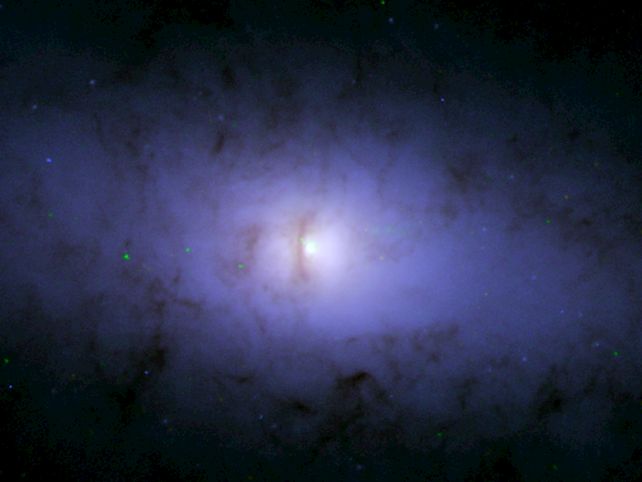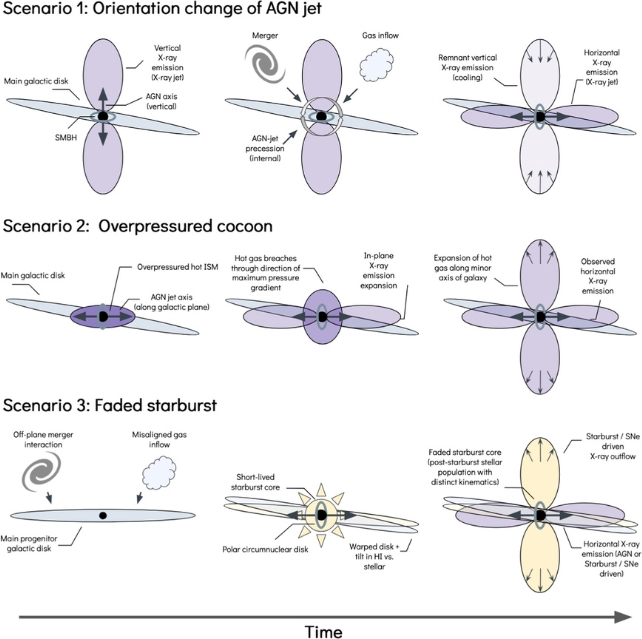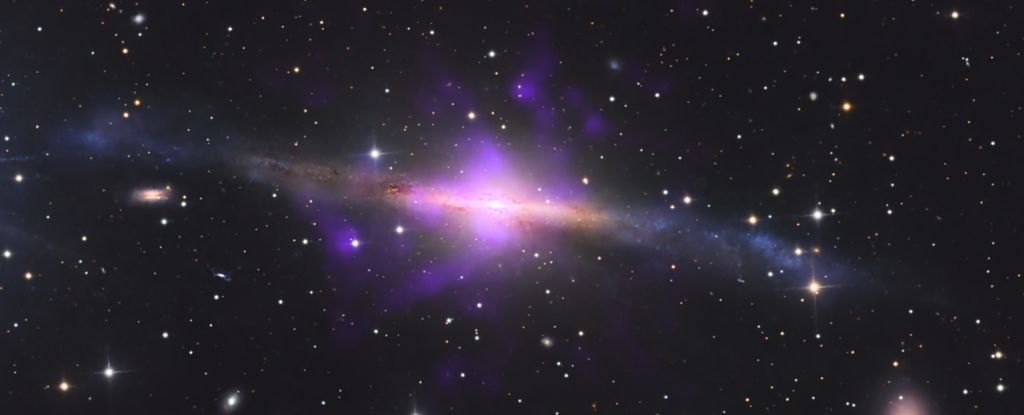Products You May Like
A glowing galaxy not far from the Milky Way has been harboring a strange, puzzling secret at its core.
In the center of NGC 5084, some 80 million light-years away, the supermassive black hole around which the whole galaxy revolves has been discovered tipped over on its side, with its rotational axis parallel to the galactic plane.
It’s a bit like the Uranus of black holes, and astronomers are uncertain how it could have gotten that way – especially since the evidence suggests that it wasn’t always oriented as it is in our current observations.
The discovery is a remarkable piece of astrophysical detective work, based on archival observations dating back three decades, revealing how preserved data can be used to piece together a galaxy’s history, further back in time than we are actually able to see.
The galaxy NGC 5084 has been known for centuries. It was first cataloged by William Herschel in 1785, and has been well studied since. It’s what is known as a lenticular galaxy – one that’s somewhere between a spiral galaxy, like the Milky Way, and an elliptical galaxy, just sort of a fuzzy blob with no structure. NGC 5084 has a disk, but no large-scale spiral arms that we can discern.

It’s also huge, more than 200,000 light-years across, and with a mass estimated at 1.3 trillion Suns. It’s one of the heftiest lenticular galaxies we’ve ever measured.
But there’s not a lot we know about the supermassive black hole in the galactic center. NGC 5084 is edge-on to us, which makes galactic center observations challenging, and the center itself is bright and dusty. Led by astronomer Alejandro Borlaff of the NASA Ames Research Center, a team of scientists found archival observations could be tapped to find out more about the galaxy’s core.
The researchers were testing some new image analysis techniques on data from NASA’s Chandra X-ray observatory when they noticed something very strange: Four long plumes of X-ray-emitting plasma streaking away from the galactic center in the shape of an X.
Such plumes are evidence of past galactic center activity. When a black hole slurps up matter from the space around it, not all the material ends up disappearing forever beyond the event horizon. Scientists believe some is diverted along the magnetic field lines outside the black hole to the black hole’s poles, where it is launched into space as jets of plasma.
allowfullscreen=”allowfullscreen” frameborder=”0″>
Two of the plumes the researchers found were extending above and below the galactic plane, as would be expected if the equatorial plane of the black hole was aligned with it.
But the other two plumes were embedded in the galactic disk – suggesting that the supermassive black hole had started in a normal position, then somehow tipped sideways, like it had gotten bored and tried something new.
The puzzled team headed back to the archives for more Chandra observations, as well as archival optical observations from the Hubble Space Telescope, the Atacama Large Millimeter/submillimeter Array radio telescope, and the Expanded Very Large Array radio telescope. They also commissioned new observations from the Apache Point Observatory.
“It was like seeing a crime scene with multiple types of light,” Borlaff says. “Putting all the pictures together revealed that NGC 5084 has changed a lot in its recent past.”
The new observations confirmed the presence of the jets – and revealed their source. At the center of the galaxy, the researchers found a band of dust, characteristic of the disk of material that swirls around the equatorial region of a supermassive black hole, as viewed from the side.

But this, too, was awry: rather than aligned with the galactic plane, it was perpendicular – revealing that the black hole is, indeed, laying on its side at the time of observation.
This is suggestive of an interesting event in the galaxy’s past that could have produced an influx of material into the galactic center, such as a merger with another galaxy, with its own supermassive black hole, resulting in a collision and merger between the two supermassive black holes.

We don’t know, yet, if this is the case. But we do know the mass of the black hole for the first time: the researchers determined that it clocks in at 45.7 million times the mass of the Sun. More work will need to be done to narrow down the event that toppled it.
It’s just astonishing to think that, after gazing at this galaxy for centuries, this is the first time we’ve discovered these shenanigans going on inside NGC 5084.
“Detecting two pairs of X-ray plumes in one galaxy is exceptional,” says astrophysicist Pamela Marcum of the NASA Ames Research Center. “The combination of their unusual, cross-shaped structure and the ‘tipped-over,’ dusty disk gives us unique insights into this galaxy’s history.”
The research has been published in The Astrophysical Journal.
